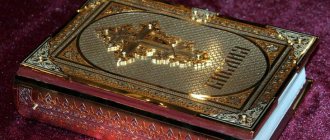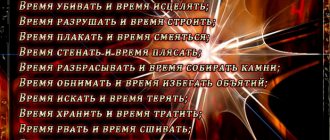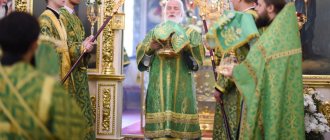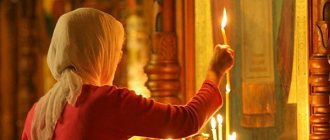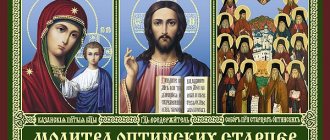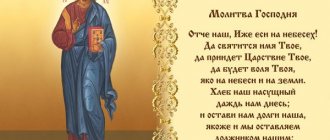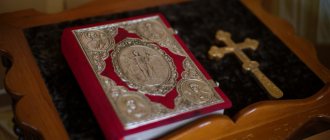Author.
The author of the book was Daniel, who is also one of the main characters in the book. There is not much information about Daniel and his origins. According to the testimony of his contemporary Ezekiel, he was known for his righteousness (Ezek. 14:14,20) and wisdom (Ezek. 28:3). In these verses, Ezekiel mentions Daniel along with Noah and Job. Daniel was of high birth (Dan. 1:3,6), attractive in appearance, and intelligent (1:4).
From the text of the book it follows that in the third year of the reign of Cyrus of Persia, that is, in 536 BC, Daniel was still alive (10:1). From 1:4 we learn that he was one of the “youths” who, by order of Nebuchadnezzar, were brought to Babylon in the third year of the reign of King Jehoiakim of Judah (1:1). If we assume that then, in 605 BC, Daniel was 16 years old, then in the third year of Cyrus’s reign he was 85.
From the contents of the book it follows that it was written by Daniel in the 6th century BC. The book of the Prophet Daniel is the first of the great apocalyptic books of the Bible. The Greek word apocalypse means “unveiling” or “revelation.” And although all of Holy Scripture is a revelation from God, some parts of it are unique both in the form of the revelations they contain and in the way they are conveyed to people.
Here are a few features that characterize apocalyptic writings. Firstly, they made extensive use of symbols and allegories. Secondly, they are characterized by an appeal to the destinies of the Jewish people, which are “revealed” in the light of God’s plan for the future. The mystery of this future is reflected in the very nature of the narrative, replete with symbols and allegories. This is explained by the fact that the revelations given to apocalypticists often referred to the “other age”, which will be opened by the second coming of the Messiah.
And this means the “coming” of the Kingdom of God. These revelations thus contain realities of another world that are difficult to express in the language of our world. Let us note, however, that in the interpretation of apocalyptic visions, symbols and signs, the reader is rarely left to his own ingenuity to “get to the bottom of the truth.” Often Scripture interprets itself. But in order to understand this interpretation, readers need to carefully study the contexts and compare parallel passages in the Bible.
The third feature of apocalyptic writings: they are composed mostly in the language of prose (in contrast to prophetic writings, which are characterized by poetic language). In addition to the Book of Daniel and the Book of Revelation, apocalyptic writings are contained in the books of Ezekiel and Zechariah (Ezek. 37-48; Zech. 1:7 - 7:8). In addition, there are many apocalyptic books that are not included in the biblical canon and belong to the apocrypha.
The book of the prophet Daniel is unusual in that it is written in not one, but two languages: 1:1 - 2:4a and chapters 8-12 are in Hebrew, and 2:4b-7:28 are in Aramaic, which was the common language the pagan world of that time. Although the Book of the Prophet Daniel is a single literary work, two main semantic accents are visible in it.
One corresponds to God's plan for the Gentile nations (2:4b-7:28). It seems natural that the prophecy regarding them was written down in a language they understood. The other main emphasis of the Book of the Prophet is on the destinies of the people of Israel. This theme is explored in 1:1–2:4a and chapters 8–12. And Daniel wrote these cards in Hebrew.
Both of these parts, despite their different contents, are united by an important common idea, or more precisely, the teaching of the universal Kingdom of God and the Son of Man, which will triumph over paganism in all its manifestations. The future worldwide Kingdom cannot remain in the hands of the Gentiles. By ruling the nations of the earth, God leads them to fulfill His will.
There is no doubt that it is from the Book of the Prophet Daniel that Christ uses the name Son of Man, which he applies to Himself, thereby confirming the messianic inspired nature of the teaching contained in it. The fact is that the image of the Son of Man, “appearing” in the 7th chapter of the book, is the image of a being only in human appearance, but its origin is clearly heavenly.
The image of the One who is the great executor of God’s plans, in order through Him to carry out judgment over His enemies and bring the Kingdom of God to a transformed earth. It cannot be said that, starting from the 6th century BC, the apocalyptic meaning of the expression “Son of Man” became increasingly rooted in Jewish religious consciousness.
The image of Daniel - how the issue of combining iron and clay is resolved
Professor Lopukhin concludes that the fourth kingdom is the Roman Empire. And it’s hard to object to this:
The fourth kingdom is represented by the image of iron legs and partly iron and partly clay legs of the image. According to the prophet Daniel, this means that, possessing all-crushing power, it will be as fragile as clay. The joint, simultaneous manifestation of these two opposite qualities is unacceptable because a disintegrating kingdom cannot be at the same time all-crushing and exterminating. It is therefore more natural to see in the words of the prophet an indication of two different moments in the history of the fourth monarchy: a period of extraordinary power, strength and a period of decline, decomposition caused by the inability to unite the disparate parts of the state. At first hard as iron, it will later turn into brittle iron-clay. The prophet Daniel himself distinguishes between these two points, giving a separate explanation of the iron legs and iron-clay legs of the idol.
Characterizing the fourth kingdom in this way, the prophet does not call it by name, as he does regarding the second and third monarchies, and this circumstance serves as a reason for identifying it either with the Syro-Egyptian kingdom or with the Roman kingdom. As for the first opinion, it does not find any basis in the parallel dream of Nebuchadnezzar, the vision of Chapter 8. The Syrian and Egyptian kingdoms are represented in it by the image of horns growing on the head of a goat (Dan. 8: 21–22), i.e. they are kingdoms formed from the Greco-Macedonian monarchy, and therefore should be considered as its continuation and modification , which cannot be said about the fourth kingdom. Further, according to the instructions of Daniel 8:22 and Daniel 11:4, the Syrian and Egyptian kingdoms will be weaker than the monarchy from which they arise; Meanwhile, the fourth kingdom seems to be superior in strength to all the previous ones.
There is more reason to understand the Roman monarchy by it: it possesses the qualities of the fourth kingdom of Daniel. With its all-crushing, initially invincible power and worldwide devastating conquests, it surpassed all previous states.”
The iron-clay kingdom will come after the iron one. The prophet Daniel says that clay is mixed with iron and they will exist simultaneously in one kingdom. But it will be like this:
“The kingdom is divided, and a few strengths of iron will remain in it, just as you saw iron mixed with pottery clay. And just as the toes were partly made of iron and partly made of clay, so the kingdom will be partly strong and partly fragile. And that you saw iron mixed with pottery clay, this means that they will mix through human seed, but will not merge with one another, just as iron does not mix with clay.” Daniel 2:41-42
Historical setting.
Nineveh, the capital of Assyria, fell to the combined forces of Babylon and Media in 612 BC. Part of the Assyrians, led by Assurubalite, fled west to Harran, and from there proclaimed their dominion over all of Assyria. But in 611, Nabopolassar, the king of Babylon, moved his troops against the Assyrians settled in Harran. And the next year (610), in alliance with the Medes, attacked Harran. The Assyrians fled further west, beyond the Euphrates River. Harran surrendered to the Chaldeans. In 609 BC, the Assyrians turned to Egypt for help, and Pharaoh Necho I agreed with them.
In those days, King Josiah of Judah, in the hope of winning the gratitude of the Chaldeans, made an attempt to prevent the Egyptians from uniting with the Assyrian army, for which he went out to meet the Egyptian army at Megiddo. However, he was not only defeated, but he himself was mortally wounded in a battle with the Egyptians (2 Kings 23:28-30; 2 Chronicles 35:24). Having united their forces, the pharaoh and the Assyrians fought with the Chaldeans at Harran, but were defeated by them.
Apparently, at this time Assyria was leaving the historical scene; as for Egypt and Babylon, the conflict between them continued. Both armies met at Carchemish in 605 BC; The Babylonian army was led by Nebuchadnezzar. The Egyptians were defeated, and in May-June of that year Carchemish was destroyed by the Babylonians.
Pursuing the retreating Egyptians, Nebuchadnezzar moved south, capturing more and more lands, right up to the Syrian border, and approaching Palestine. But having received news of the death of his father Nabopolassar during this military campaign, he returned to Babylon to assume the royal crown; this was in August 605 BC.
Then, however, Nebuchadnezzar returned to Palestine and in September 605 approached the walls of Jerusalem. It was then that Daniel and other “youths” from aristocratic families were taken to Babylon as captives. Perhaps Nebuchadnezzar took them as hostages to keep the people of Judah from revolting. Or perhaps the king had other plans for the noble Jewish youths: for example, to educate them as “his people”, who, if Judea transferred to a vassal position, would occupy high administrative positions there. Returning to Babylon, Nebuchadnezzar reigned there for 43 years (605-562 BC).
Nebuchadnezzar came to Judah for the second time in 597, having learned about the rebellious behavior of King Jeconiah. Jerusalem was taken by the Chaldeans, who this time took 10 thousand captives to Babylon; among them was the prophet Ezekiel (Ezekiel 1:1-3; 2 Kings 24:8-20; 2 Chronicles 36:6-10). And for the third time Nebuchadnezzar returned to Judea in 588 BC. After a long siege of Jerusalem, the city fell and was destroyed, and the temple was burned; this was in 586. Most of the Jews, those who were not killed, were taken to Babylon (2 Kings 25:1-7; Jeremiah 34:1-7; 52:2-11).
The return of the Jews to their land became possible only in 539, when the Persian king Cyrus defeated Babylon and founded a new empire - the Medo-Persian. Since it was Cyrus's policy to return the conquered and "displaced" peoples of the Chaldeans to their lands, he issued a decree in 538 giving the Jews the right to return to Jerusalem if they wished (2 Chron. 36:22-23; Ezra 1:1-4) . About 50 thousand Jews, taking advantage of this right, came to their country and began to restore the temple. Daniel prayed for this (Dan. 9:4-19). The temple was completed in 515 BC (Ezra 6:15).
Almost 70 years passed from the first successful war of the Chaldeans against Jerusalem (605 BC) to the return of the Jews home and their laying of the foundation of the temple (536 BC). The time interval between the destruction of the temple (586) and its restoration (515) corresponded to approximately the same number. Thus, Jeremiah's prophecy about the 70-year stay of the Jews in Babylonian exile was almost literally fulfilled (Jer. 25:11-12).
The most accurate prophecy about the time of Christ's coming
Daniel's sermon is not only addressed to the Babylonian kings. The book of this prophet contains the Old Testament Gospel about the imminent coming of Christ. Daniel has the most precise indication of the timing of when this will happen.
“Seventy weeks are ordained for your people and for your holy city, that the transgression may be covered, the sins may be sealed, and the iniquity may be blotted out, and everlasting righteousness may be brought in, and the vision and the prophet may be sealed, and the Holy of Holies may be anointed. So know and understand: from the time the commandment goes out to restore Jerusalem until Christ the Lord there are seven weeks and sixty-two weeks... And after the sixty-two weeks Christ will be put to death, and will not be; and the city and the sanctuary will be destroyed by the people of the leader who comes” (Dan. 9:24-26).
Weeks were the usual calculation of years for the ancient Jews. The commandment to number years by seven years and to celebrate the Sabbath and Jubilee year has been known since the time of the prophet Moses:
“Six years thou shalt sow thy field, and six years thou shalt prune thy vineyard, and gather in the produce thereof: but in the seventh year shall there be a Sabbath of rest for the land, a Sabbath of the Lord: thou shalt not sow thy field, neither shalt thou prune thy vineyard; whatever grows in your harvest, do not reap, and do not remove grapes from your unpruned vines; May this be a year of peace for the earth...
And count yourself seven Sabbath years, seven times seven years, so that in the seven Sabbath years you may have forty-nine years; And you shall blow the trumpet in the seventh month, on the tenth [day] of the month, on the day of atonement you shall sound the trumpet throughout all your land. and sanctify the fiftieth year and proclaim freedom on the earth to all its inhabitants: this shall be your jubilee” (Lev. 25:3-10).
The seventy weeks predicted from the time of the decree of Cyrus the Great on the restoration of the city of Jerusalem and the temple amounted to 490 years. At the end of the time of this prophecy, every Israelite expected the coming of the Savior. They asked about every new preacher: “Isn’t he the Christ?”, and about every childless family from the tribe of Judah they regretted that God had rejected them as the parents of the future Savior of the world. Even King Herod, an Edomite by origin, hearing about the rising of the star, was afraid for his throne and ordered to kill all the babies of Bethlehem just in case.
In this prophecy, Daniel also predicted the destruction of Jerusalem shortly after the crucifixion of Christ - in 70 AD. Roman Emperor Titus Vespasian (and the city and sanctuary will be destroyed by the people of the leader who comes).
Purpose of writing.
The following goals can be distinguished: 1. Daniel's personal devotion to God, his firmness in piety even in conditions of captivity (chapter 1) should have shown the Jewish exiles a model of life that they should have lived in the community of the pagans.
2. The book emphasizes the power of God over the pagan peoples, showing how He, following his goal, establishes and destroys empires, establishes and deposes kings. Nebuchadnezzar also understood this great truth (4:34).
3. From the book it is clear that God remains faithful to the people with whom He bound Himself by covenant, protecting and preserving them even when they are punished for their disobedience. God is patient with those for whom His blessings are ultimately reserved.
4. The book was also written to clearly show readers the so-called “prophetic period” in history, known as “the times of the Gentiles” (Luke 21:24). Daniel traces the course of the history of the Gentile nations during this extended period when Israel was (and is!) subjected to “discipline” through these nations. The consummation of God's plan for the nations will occur during the great tribulation period.
5. The book of the Prophet Daniel also testifies to the future deliverance of Israel and the blessings awaiting them in the Millennial Kingdom. As God promised Abraham, the promised land would then belong to his descendants. Having gone through suffering because of their disobedience to God, the people will be brought to repentance; having confessed faith in his Lord, he will be restored by Him.
The book of the Prophet Daniel is of great historical significance. It seems to throw a “bridge” between the historical books of the Hebrew Bible and the books of the New Testament. It records a number of events in Israel's history during the 70-year Babylonian captivity that are not recorded anywhere else in the Scriptures (except for some fragmentary information about them in the book of Ezekiel).
It is noteworthy that some prophecies of the Book of the Prophet Daniel, dedicated to pagan peoples, have their parallels in the book of Zechariah. However, we find their revelation and final illumination in the book of Revelation. And without the Book of the Prophet Daniel it would be impossible to understand what was revealed by God in the book of Revelation.
Nebuchadnezzar's Dream
One day the king had a dream that greatly surprised and alarmed him. Here is its content:
“You, king, had such a vision: behold, some kind of large idol; This idol was huge, it stood before you in extreme splendor, and its appearance was terrible. This image had a head of pure gold, its chest and arms of silver, its belly and thighs of copper, its legs of iron, its legs partly of iron and partly of clay.
You saw him until the stone came off the mountain without the help of hands, struck the image, his iron and clay feet, and broke them.
Then everything was crushed together: iron, clay, copper, silver and gold became like dust on the summer threshing floors, and the wind carried them away, and no trace remained of them; and the stone that broke the image became a great mountain and filled the whole earth.”
(Dan.2:31-35)
The only one who was able to talk about this dream and provide an interpretation was Daniel.
Archangel Gabriel explains the vision to the prophet Daniel. Painting of the Cathedral of the Nativity of the Virgin Mary in Ferapontov Monastery. Master Dionysius. 1502
Who revealed the secrets of the future to the prophet Daniel
Daniel did not have a third eye. He spoke directly about who gave him the ability to reveal secrets:
“Daniel answered the king and said: the secret that the king asks about cannot be revealed to the king by wise men, charmers, mystic scholars, or fortune-tellers. But there is a God in heaven who reveals secrets; and He revealed to King Nebuchadnezzar what would happen in the last days.”
(Dan.2:27,28)
Five Kingdoms
Nebuchadnezzar's dream has prophetic meaning. Daniel explained that each part of the image signified a certain political system or world power that would prevail at a certain period of history:
1. Golden Head - the Neo-Babylonian kingdom, which became a world empire under Nebuchadnezzar. 2. Silver chest and arms - Medo-Persia. 3. Copper or bronze upper body and legs - Greco-Macedonian kingdom. 4. Iron lower legs - Roman Empire. 5. Feet made of a mixture of clay and iron - European states created on the ruins of the Roman Empire.
Let us note that there is no consensus among interpreters about the fulfillment of this prophecy. Some believe that the lower part of the idol symbolizes Rome in its decline, when the empire began to include more and more peoples, often rebelling against the conquerors. In the end, Rome fell under the onslaught of barbarian tribes.
Prophet's vision Daniel of the four kingdoms. Fragment of the icon “Arch. Michael with the deeds of the angels." Con. XIV century
However, the answer to this can be that each part of the idol represents a separate world empire or a more or less homogeneous political force. Therefore, it is still logical to conclude that the feet of the idol mean the post-Roman world. European powers extended their influence throughout the planet. It would be surprising if the prophecy did not affect those states under whose combined rule most of the world fell.
Clay mixed with iron may indicate that the European states will no longer have the strong unity characteristic of Rome.
Memory
In icons, Daniel, as a rule, holds in his hands a scroll with inscribed words of prophecy. The saint is most often depicted at a young age. The first surviving images date back to the 3rd century AD. e. On Byzantine frescoes and mosaics you can see the prophet surrounded by three youths or thrown into a den of lions.
Orthodox icon of the prophet Daniel / ABC of faith
Ancient icons of the Old Testament righteous man are kept in the St. Daniel Monastery in Moscow and the Nativity Church in Veliky Novgorod. In honor of Daniel, Orthodox churches are being built in different cities; in Novosibirsk, the church was erected under Emperor Alexander III in 1898.
Dozens of books and studies are devoted to the life of the saint and the interpretation of his writings. Biblical theologians and historians have been writing about him for many years. In 2013, American director Anna Celinski shot an hour and a half feature film “The Book of Daniel”, dedicated to the biography of the prophet. The historical drama carefully interprets the biblical plot and places emphasis on the hero's moral choice between serving the king and loyalty to God.
Biography
The biblical prophet Daniel is considered one of the four great ones, along with the Old Testament saints - Isaiah, Jeremiah and Ezekiel, who left behind sacred books testifying to their closeness to God. Daniel is revered by representatives of three world religions: along with Christians of all faiths, Muslims and Jews pay tribute to the righteous man. The saint lived his life in Babylonian captivity, dying at a very old age and leaving behind a book of prophecies, foreshadowing the triumph of divine truth.
Death
The Prophet Daniel lived a long life, in which there were ups and downs; he experienced fame and veneration, which were replaced by slander and disgrace. The Holy Scripture is silent about the cause of death, but it can be assumed that the saint died of old age, having lived to be 90 years old, and according to other sources, even more. He never saw his native land, remaining a Babylonian captive until the end of his days.
The elder was buried in Susa, an ancient eastern city located on the territory of modern Iran. There is an ancient mausoleum here, included in the state's national heritage list.
Tomb of the Prophet Daniel in Susa / Robert Wielgorski, Wikipedia
However, more than one city is vying to provide pilgrims and tourists with the opportunity to see the tomb of the prophet. In Uzbek Samarkand, the Khoja Doniyor mausoleum is installed above an 18-meter crypt.
It is believed that the remains of Daniel (in the Muslim tradition Daniel or Daniyar), brought here in the 15th century by the conqueror Tamerlane, rest there. In Islam, it is customary to honor the biblical prophet, and believers are accustomed to expecting miracles from his grave. One of them happened in 2000, when a half-century-old pistachio tree, which grew near the crypt and had long since dried up, suddenly suddenly sprouted new shoots.
Personal life
It is hardly possible to talk seriously about the personal life of a righteous man who lived 28 centuries ago. At the very least, Scripture is silent about it, revealing information only about his spiritual exploits, miracles and predictions. It can be assumed that the saint devoted himself entirely to serving God and therefore did not have a wife or children. It is known that Daniel respected the law of his ancestors even in small things, not allowing himself to eat food defiled by the pagans. Therefore, maintaining bodily purity and chastity is seen as one of the components of the prophetic path.


